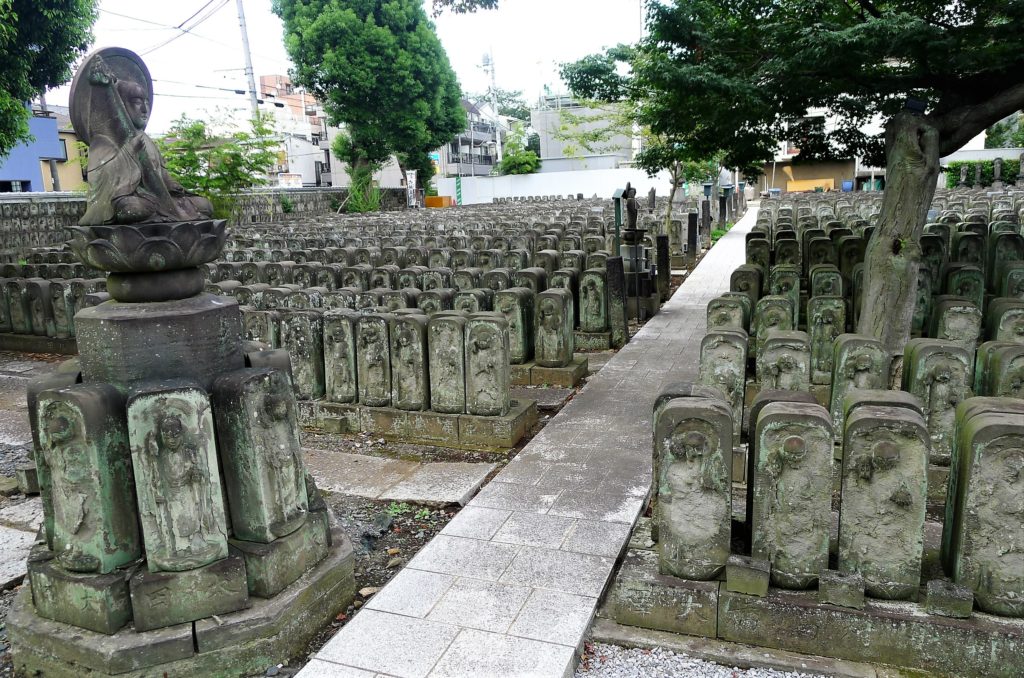Famous tourist attractions are understandably in a tourist’s bucket list but I do try including off-the-beaten track destinations in my travel itinerary.
For this stay in Tokyo, I opted for seeing more of YANESEN – this is an acronym for YAnaka, NEzu, and SENdagi. These belong to a short list of areas in Tokyo that was spared from World War II bombing. It has become one of the most quaint places in the city, as the atmosphere of early 20th century culture still lingers in its old streets, nooks and crannies.
Prior experiences in Japan have led me to unplanned discoveries and an-ever mounting appreciation of its culture and ways. Getting lost in this country is typically an adventurous event with memorable results.
A wrong turn of a deserted street or corner, a stop at a narrow alley for a closer inspection of a curio which you saw out of the corner of your wandering eye could lead to lucky opportunities – either for Instagram-worthy amazing scenes or for tucking in your brain a historical fact about a building, place or item which the Japanese consider of cultural importance .
Two items on my YANESEN checklist were the Nezu Shrine and Yanaka cemetery – with the stipulation that we would also pay a short visit to anything else we could stumble upon while roaming around.
A secluded temple which had an interesting-sounding byline was fortuitously a block or two from where we already were as we headed to the cemetery. We took a turn and diligently followed the map’s instructions, only to bewilderingly crane our heads at the junction where it was supposed to be. We spied a modern building on one corner and a public toilet at the opposite. The latter was amusingly “open”, i.e. you could see the backs of men while they stood emptying their bladder.
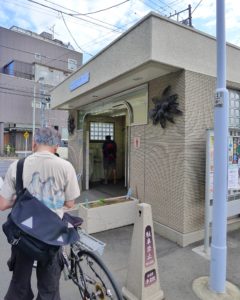
An open entryway straight ahead of us showed a structure which belonged to an older era. Like a fearless dragon, we poked our heads in and were rewarded by the sight of Kan’eiji Temple. It turned out to be the family temple of the Tokugawa clan (This was the family that established the Edo shogunate, also known as the Tokugawa shogunate.)
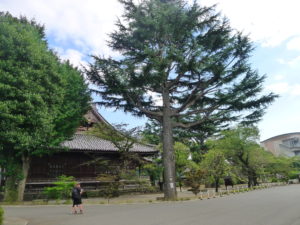
After spending time in exploring the surrounding garden of Kan’eiji, we doubled back to the earlier junction and followed a different street leading off it. We belatedly noticed that the temple we were looking for was actually behind a big sign perched on top of the wall, which showed images of tombstones, and you guessed it, lines of jizos! *facepalm*
Upon closer inspection, the sign said “Usenosakuragi Park / Jyoumyouin Grave Garden”.
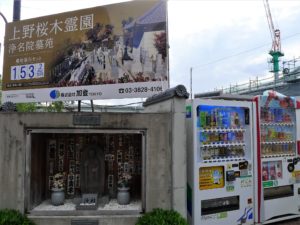
Jyōmyōin or spelled sometimes as Jyoumyouin, is a temple whose structure was built in 1666. It was the residence of one of the priests of the nearby Kan’eiji temple which we had just seen. (I think it was a stroke of luck that we did not find Jyoumyouin temple at once, otherwise we might have missed Kan’eiji, not knowing it was just a stone’s throw away.)
Jyomyoin became a place for the worship of the Jizo in 1876, during the time of the 38th generation priest (called Myoun). He set the goal of having 1,000 of these stone Jizo. When that was accomplished, he reset the goal to 84,000. That seems like quite a leap of numbers, eh?
We later learned that 84,000 meant an “infinite number” in Buddhism. But in fact, there are only around 25,000 Jizo statues here.
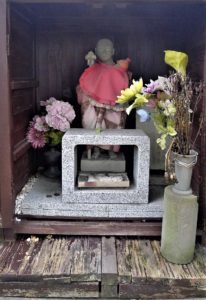
Jizos are what the Japanese consider as guardians of travelers, young children and the weak. They probably have additional functions I may not be aware of, but I’ve always just enjoyed looking at these statues with their bright red (or even faded) bibs.
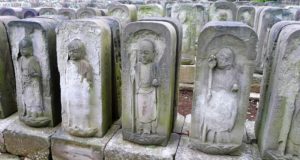
Notice though that the Jizo statues in this temple are mostly enthroned in a stone frame, (hence no bibs) and aligned in multiple rows. I’ve read that it is customary to pick up the pieces of broken rock and place them close to the nearest statue.
Entering the grounds, it was quiet and we practically had the place all to ourselves. This made for a more relaxed pace of exploration.
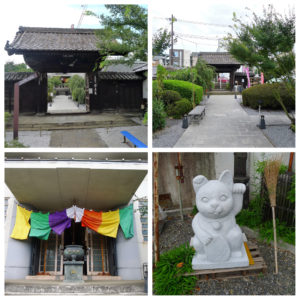
Benches where provided and you could reflect on the significance of the jizos or perhaps visit the tombstones of loved ones. Ubiquitous vending machines which dispensed delicious hot and cold drinks were ever-present.
It seemed a fitting episode in our YANESEN exploration to be just sitting in the quiet afternoon with the silence broken by the occasional cackling crow which flew over our heads (Japanese crows are polite too! I never had an accidental splat from them as they passed overhead, now English birds on the other hand…but that is another story.)
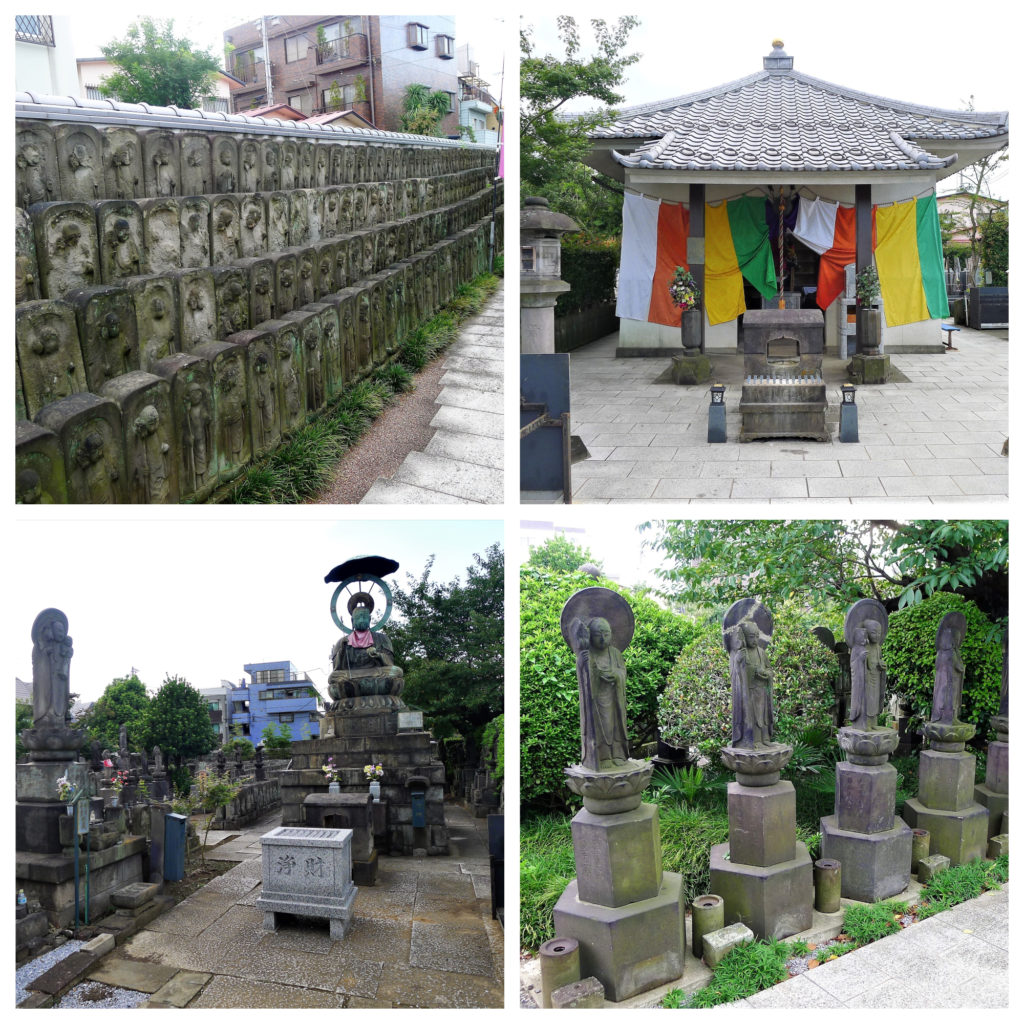
I moved to the information sign which shared that on August 15th as per lunar calendar, a religious service is held for Hechima Kuyou (sponge cucumber). A lot of people attend as it is said the religious service miraculously cures illnesses such as coughing and asthma. I guess this is is not a touristy event, and more Japanese people-focused.
I was amused by this information as I think of sponge cucumbers as best for bathing (think of our ever-handy loofah). I’ve tasted them in a soup, but I had never thought it was for a cure for respiratory illnesses. Still, if people believe who knows what faith can do?
In the background, the muffled sounds of modern Tokyo going about its business did not detract from the “grave” (pun intended) atmosphere. It felt like I was just calling a time-out session amidst the hustle and bustle of a busy metropolis. I found the relaxation I had been missing in the company of these numerous somber stone Jizo statues and elegant tombstones.
I was more than satisfied in getting to see the 25,000 jizos – although 84,000 jizos would have made my eyebrows rise to the heavens. Mission accomplished!
If your itinerary includes Yanaka Cemetery, take a detour to also see this temple. I do not think there are other places with such numerous jizos in the midst of the city, and it is already within walking distance from Yanaka. You will also be passing by other quirky places which may add to your adventures while visiting this district (such as an early Showa-era themed coffee shop, an art gallery housed in an old public bath, to name a few).
Oh, and one more thing which is always a bonus – admission to this place is FREE!
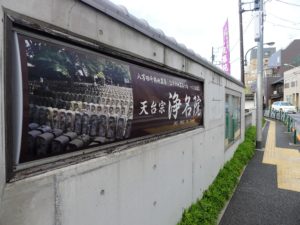
Address: 2-6-4 Ueno Sakuragi, Taito-ku, Tokyo 110-0002
Opening Hours: 9:00 a.m. – 5:00 pm
Visited: September 2017.
All images© 2017 Catherine Herrera.
